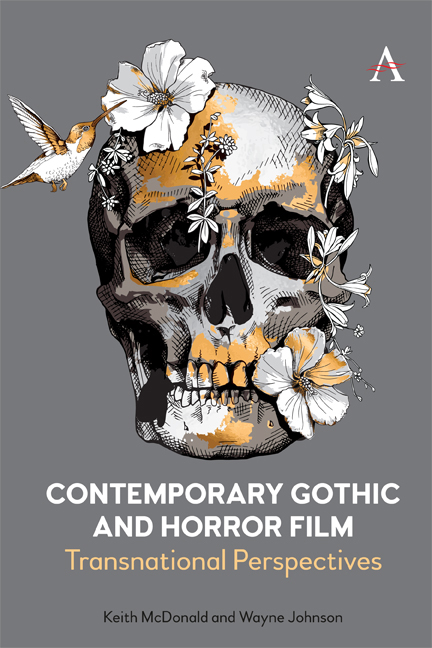Book contents
- Frontmatter
- Dedication
- Contents
- Acknowledgements
- Introduction
- 1 The Gothic Tradition Illuminated on Screen
- 2 Grief Encounters: Ghost Narratives
- 3 Folk in Hell: Rurality in Transition
- 4 Vampire Gothic as Post-Exotic Gloom
- 5 Shock and Awe: Cosmic Horror as Existential Crisis
- 6 De-Composmolitanism: Zombie Horror as Apocalypse
- Coda
- Bibliography
- Index
1 - The Gothic Tradition Illuminated on Screen
Published online by Cambridge University Press: 04 June 2021
- Frontmatter
- Dedication
- Contents
- Acknowledgements
- Introduction
- 1 The Gothic Tradition Illuminated on Screen
- 2 Grief Encounters: Ghost Narratives
- 3 Folk in Hell: Rurality in Transition
- 4 Vampire Gothic as Post-Exotic Gloom
- 5 Shock and Awe: Cosmic Horror as Existential Crisis
- 6 De-Composmolitanism: Zombie Horror as Apocalypse
- Coda
- Bibliography
- Index
Summary
According to Glennis Byron, in her account of the global Gothic, transnational Gothic and regional Gothic, all are often portrayed as evolving from Anglo-European influences as a kind of ‘colonial imposition’ which are re-appropriated and then develop local forms for mutual but separate origins (370). Indeed, the Gothic literary style has increasingly been identified with English national identity. Further, a form of Gothic tourism takes place. In his account of the ‘imperial Gothic’, Patrick Brantlinger establishes a number of key processes the protagonists undergo in their contact with the wilderness, namely the sense of the so-called Englishman, so typical in a range of stories by writers such as M. R. James and others, where the protagonists are portrayed as ‘losing their physical and mental and moral integrity’, in other words, ‘the terror of going native’ (64). Secondly, there is the fear of invasion and of contamination; a reverse colonialism (65). As Punter asks then, ‘has Gothic become, in the contemporary marketplace, a means of expression for local ghosts, or a means of imposition of western conceptions which have no idea of […] the enduring cultures and communal power of the ancestors?’ (New , 2– 3).
Darryl Jones is correct to point out that ‘the development of the Gothic and modern horror coincides with the formation of a British national identity’, if we accept that a sense of nationalism as being ‘articulated through narrative, myth and symbol’ (Horror , 8). Secondly, that sense of Britishness was defined by Protestantism. Jones defines the Gothic as being complex in this sense with its anti-Catholic chauvinism depicted in the way Catholicism is portrayed, with its barbaric superstition and blood ritual. Similarly, Robert Miles argues that ‘to be British was to be Protestant, with both identities driving strength from deep wells of residual anti-Catholicism. The Catholic became the convenient other of “British” identity’ (15). Ann Radcliffe's The Italian (1797) or the depiction of Spaniards in Matthew Lewis's The Monk (1796), or even Sheridan Le Fanu's Uncle Silas , published in 1864 and filmed in 1947 (dir. Charles Frank) and involving a close up which would cinematically ‘demonise’ the French governess, Madame de la Rougierre. Thus, to return to Jones, who contends, ‘the Gothic novel allowed a British audience conversely to identify as Protestant, rational, ordered, stable and modern’ (9).
- Type
- Chapter
- Information
- Contemporary Gothic and Horror FilmTransnational Perspectives, pp. 7 - 28Publisher: Anthem PressPrint publication year: 2021



